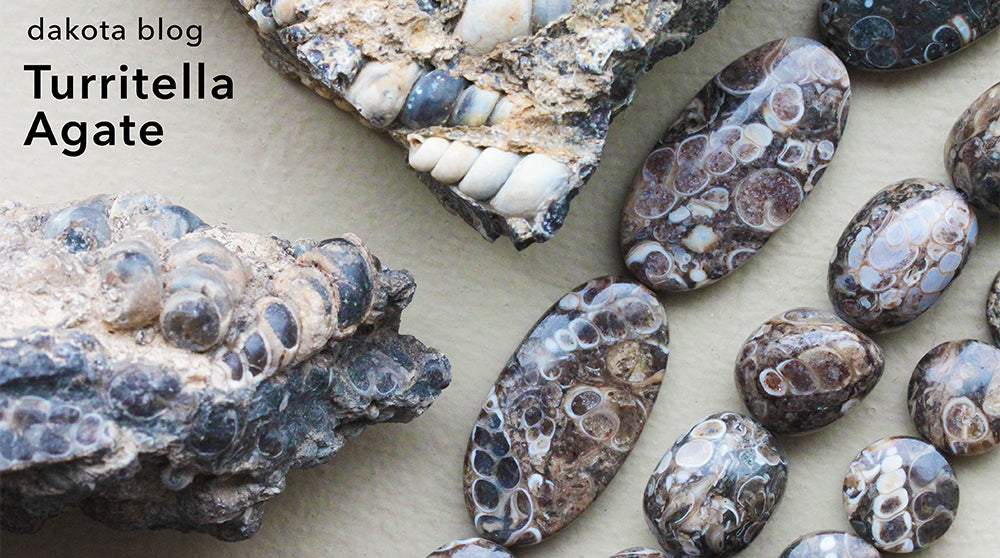
Turritella Agate
Known for its snail fossils entombed within the agate, the stone is brown, translucent to semi-transparent, and found in the Green River formation in Wyoming. It is the most popular stone from that formation. The white snail fossils sharply contrast the dark brown background. This is where the person who discovered the stone made the mistake in the naming of the stone. The discoverer thought the fossils were from the Turritella genus, when in fact they are from the freshwater snail Elimia tenera, which is a member of the Pleuroceridae family.
Misnamed Agate
Unfortunately, by the time the error was discovered, the name Turritella had already been printed in magazines, journals and stuck in geologist’s minds. Today, there are only a few that know and refer to the stone by its appropriate name.
Three Facts About Turritella Agate, or Elimia tenera:
1. Turritella Agate rough is scarce - if it’s a stone that you like to keep available, buy it in quantity now.
2. The snails preserved in the stone are actually *not* Turritella. They’re of the Elmia tenera species. The stone was named before detailed inquiry, and the name stuck.
3. Not all rough Turritella Agate can be cut into beads. The material must have formed completely around the fossilized snail shell. Rough material that’s good enough for beads needs to be consistent in hardness and quality.


